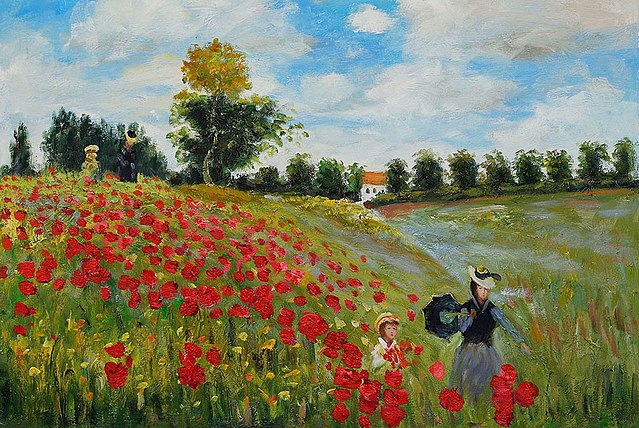Incident at Musée d’Orsay
On Saturday, a climate activist from the group Riposte Alimentaire covered Claude Monet’s 1873 painting “Poppies at Argenteuil” (Les Coquelicots) with a large sticker at the Musée D’Orsay. The protest aimed to highlight the dire consequences of climate change. The activist, dressed in a white t-shirt bearing the slogan “+4° L’Enfer” (Hell +4°), referenced the severe heatwaves predicted by the Intergovernmental Panel on Climate Change’s 2023 report if global temperatures rise by 4 degrees Celsius (7.2 degrees Fahrenheit).
French Culture Minister’s Response
French Culture Minister Rachida Dati responded swiftly on X, condemning the act and calling for new legislation to address such incidents. “Once again, a cultural institution and a work of art are targeted by iconoclasts: the painting ‘Les Coquelicots’ by Claude Monet at @MuseeOrsay!” Dati wrote. She emphasized the need for a penal policy adapted to this new form of delinquency that attacks the core of cultural cohesion.
Riposte Alimentaire’s Message
Riposte Alimentaire, the protest group responsible, defended their actions on X. They described the altered image as a “nightmarish” depiction of the same poppy field in 2100 if radical measures to combat climate change are not taken. The group advocates for sustainable food production and has conducted similar high-profile protests at European museums, including one at the Louvre last month.
Museum’s Response and Artwork Restoration
A spokesperson for the Musée d’Orsay confirmed that the painting was examined and treated by a restorer before being rehung. The museum reopened the exhibition “Paris 1874: Inventing Impressionism” on June 1, which features Monet’s renowned work. The activist involved was arrested and held in police custody before being temporarily released. She is scheduled to appear in court on July 2.
Broader Context of Art Vandalism
The incident at the Musée d’Orsay follows another high-profile case involving performance artist Deborah De Robertis. On June 3, a French prosecutor indicted De Robertis and two others for damaging and stealing cultural property. They had tagged five artworks, including Gustav Courbet’s “L’Origine du Monde,” with the slogan #MeToo at the Centre Pompidou-Metz in early May. This broader context highlights the increasing use of art vandalism as a form of protest, prompting calls for more stringent legal measures.
Conclusion
The targeting of Monet’s “Poppies at Argenteuil” by climate activists has ignited a debate over the protection of cultural heritage and the methods of protest in the face of global crises. As French authorities consider new legislation, the balance between safeguarding art and addressing urgent societal issues remains a contentious topic.
Feature Image: Claude Monet’s 1873 painting Poppies at Argenteuil | Courtesy: wikimedia commons





